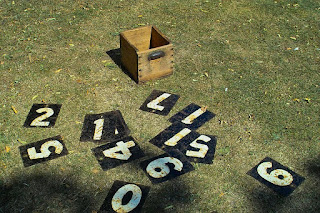To-Complete Performance Index (TCPI) in Earned Value Management (EVM)
To-Complete Performance Index (TCPI) is an Earned Value Management (EVM) concept first introduced in the PMBOK Guide, Fourth Edition. When I first read the description of TCPI in the PMBOK Guide, I couldn’t make much sense of it. After reading up more on the subject, I was surprised to realize that the concept is really simple to understand, especially if you are a Cricket (sport) fan. I can explain the TCPI concept to you in just 3 words. Yes, it’s really that simple. The concept is exactly the same as that of Required Run-Rate in Cricket.
What is To-Complete Performance Index (TCPI)?Permalink
According to the PMBOK Guide, the to-complete performance index (TCPI) is a measure of the cost performance that is required to be achieved with the remaining resources in order to meet a specified management goal, expressed as the ratio of the cost to finish the outstanding work to the remaining budget.
In simple terms, TCPI is the cost performance that must be achieved on the remaining work to meet a BAC (or EAC) target. It is the ratio of “remaining work” to the “funds remaining”.
Example of TCPIPermalink
If you are not familiar with Cricket, the most intellectual outdoor sport, skip the Cricket match example and read the remainder of the post.

Let’s take an example of a 50 over One-Day game between India and Australia. Assume that Australia batted first and scored 299 runs in 50 overs. So, India needs to score 300 runs in 50 overs. What’s the required run rate for India? It’s exactly 6 runs per over (rpo) at the start of India’s innings.
Now say after 30 overs, India managed to score only 120 runs. So, the current run-rate is 4 rpo. What’s the required run-rate after 30 overs?
Required Run-Rate = Runs remaining to be scored / Overs remaining
=> (Total Runs to score - Runs already scored) / (Total Overs - Overs used) => (300 - 120) / (50 - 30) => 180 / 20 => 9 rpo
So, India is going at 4 rpo, but needs to score at 9 rpo for the remaining 20 overs to win the game.
TCPI in Project ManagementPermalink
Now apply this analogy to Project Management.
Current Run-Rate ~ Cost Performance Index (CPI)
Required Run-Rate ~ To-Complete Performance Index (TCPI)
To-Complete Performance Index (TCPI) FormulaPermalink
To-Complete Performance Index (TCPI) is calculated by dividing the work remaining on the project by the money remaining. There are 2 different formulas to calculate TCPI. We’ll review both. Suppose your total project budget (Budget At Completion or BAC) is $300. Three days into your project, you spent $180 (Actual Cost or AC) on work that was estimated to cost only $120 (Earned Value or EV).
Therefore, CPI = EV / AC = 120 / 180 = 0.66
CASE 1Permalink
You need to complete the project within the original budget. In this case, the TCPI formula is:
TCPI = Work Remaining / Money Remaining = (BAC - EV) / (BAC - AC)
The worth of remaining work = $300 - $120 = $180
And, the money remaining = $300 - $180 = $120
TCPI = (BAC - EV) / (BAC - AC) => ($300 - $120) / ($300 - $180) => $180 / $120 => 1.5
In summary, you are going at a CPI of 0.66, but you need to go at a CPI of 1.5 for the remaining work on your project, in order to meet your original cost estimate.
CASE 2Permalink
You (as a Project Manager) realize that the original estimate was fundamentally flawed and/or it is not feasible to meet the original cost estimate. You develop a new cost estimate for the remaining work and get it approved. With the new estimate, your revised project budget (EAC) is $450. In this case, the TCPI formula is:
TCPI = Work Remaining / Money Remaining = (BAC - EV) / (EAC - AC)
=> ($300 - $120) / ($450 - $180) => $180 / $270 => 0.66
In summary, you can continue to go at your current CPI of 0.66 and complete the remaining work on the project and still meet the revised cost estimate.
Just in case you were wondering about the result of India-Australia game, of course India won, and with an over to spare !
Image credit: Wikimedia Commons
14 Comments
Cyno
JohnV
Harwinder Singh
Harwinder Singh
vj
Harwinder Singh
vj
Harwinder Singh
Vikas Jain
Harwinder Singh
Chelluri
Santosh Mukund Nemawarkar
Harwinder Singh
aconex oracle